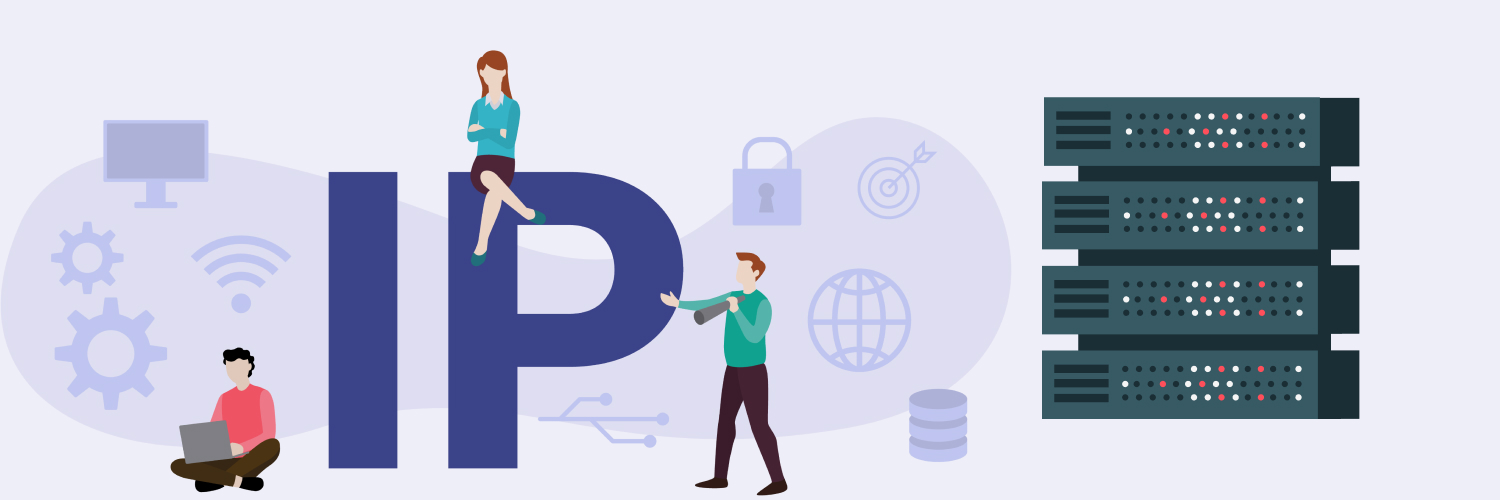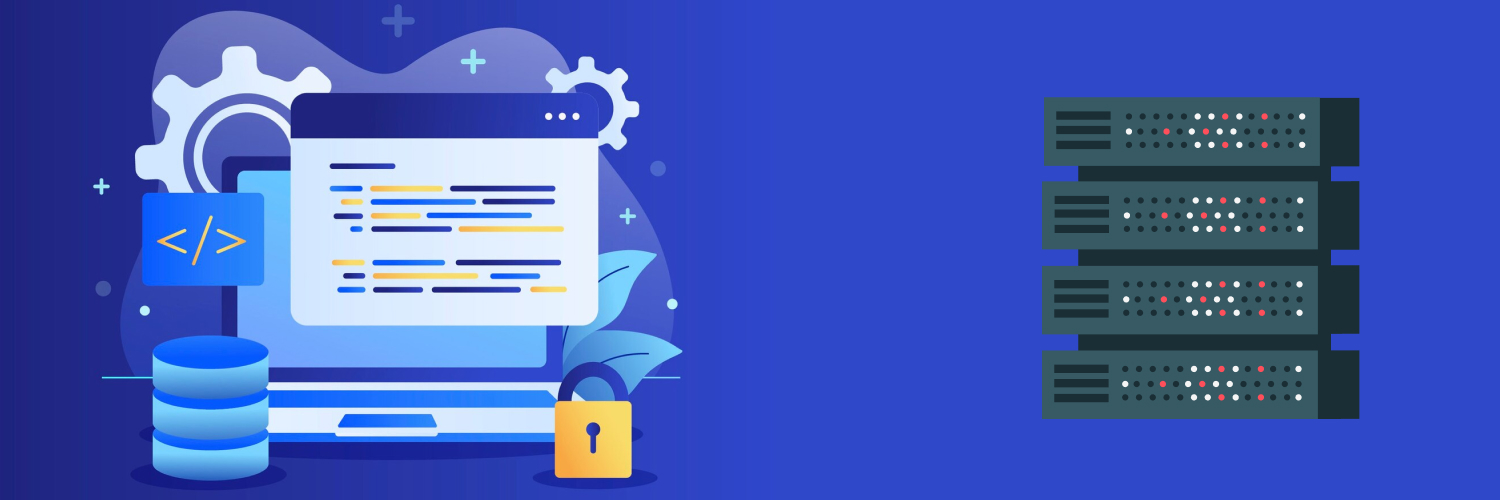Data Parsing: What’s Involved and What Do You Need to Know?
Big data has now become an integral part of modern business models. As a result, the need for data analysis, processing, and extraction has heightened in the past few years. But data collection is merely the first step. It has to be followed up by data comprehension and analysis.
Likewise, computer languages have to be translated to be used for effective communication between personnel in organizations. That is where data parsing comes into the picture.
Simply, data parsing refers to transforming often unreadable and mostly unstructured data into easy-to-read and structured data.
When working in a consumer-reliant industry, it is essential to understand data and use it to transform customer experience and ensure long-term success for the enterprise.
In this article, you will learn what data parsing is, its importance, structure, and whether you should buy or build a data parser.
What Does Parsing Data Mean?

Data parsing refers to the process of transforming scraped data and removing irrelevant information. A parser also performs other tasks, such as creating tokens.
Since it has multiple utilities, there is no standard way to define parsing data. The description for data parsing differs, depending on the field or industry. But overall, it is the method used to structure data into a readable and writable form. People from different backgrounds describe and use data scraping differently, based on their business requirements and the purpose of the data.
Before they can parse data, businesses have to collect high-quality data. This is done through web-scraping, which is the process of extracting data. In this process, a web scraper retrieves HTML documents from web pages containing extra and irrelevant information, like list tags.
What Does It Mean to Parse Data?

Parsing can mean different things in programming and other sectors.
Basically, data is pulled out of a large string of text. The text could be from any kind of text file, such as a PDF or a webpage. Parsers take the data from one format and convert it to another that is more comprehensible. Parsers are mostly used in computer science, where computer code is parsed to generate code for machines.
This is common in situations where developers have written code that needs to run on hardware. Parsers are also found in SQL engines. These engines are responsible for parsing SQL queries. They execute the command and send the results back to the source.
The major feature of a good parser is that it is not restricted by the data format. It should allow the users to input any type of data for parsing. For instance, you could input HTML data and transform it to JSON. Or, you can scrape data from JavaScript and convert it into a more comprehensible CSV or PDF file.
The most common and abundant parsing use is web scraping since raw HTML data is not very sensible. It has to be converted into a format that humans can interpret.
Workflow optimization is another important use case for data parsing. Businesses can enhance their workflows by converting unstructured data into more easy-to-understand information.
It allows companies to use their direct resources and perform an in-depth analysis. Investors can also use data parsing to offer better insights to make informed business decisions. Some professionals that use this approach include:
- Marketers
- Investors
- Hedge funds investors
- Start-up evaluators
How to Parse Data?

By now, you should know what it means to parse data and why it is important for business processes. You can define parsing data based on how you intend to use the parsed data in your workplace. If your company has decided to build a data parser, your IT team will explain its utility to you.
On the other hand, if you want a pre-built solution, the Rayobyte’s Web Scraping API is an ideal pick. The professionals at Rayobyte’s Web Scraping API build custom scraping solutions for all businesses, irrespective of how big or small the budget is.
Here are some notable features of Rayobyte’s Web Scraping API:
- Simple Pricing:When buying a parser, your ultimate intention is to reduce hassle and time consumption as much as possible. A complex pricing system only defeats the purpose. Rayobyte’s Web Scraping API has a simple pricing system. You just need to tell the team the scale of your data-collection project, and they will tell you which option is most affordable for you.
- Built for Developers:All APIs from Rayobyte’s Web Scraping API provide a structured JSON output of the metadata of a parsed website. Moreover, you can enjoy hassle-free scraping without worrying about proxy management, CAPTCHAs, or blocks.
- New Modules:Rayobyte’s Web Scraping API adds new modules regularly for all use cases.
- Additional Features:Besides data scraping, Rayobyte’s Web Scraping API also offers other features like usage and stats, Javascript rendering, and parsed metadata.
Techniques for Data Parsing

Now that you know what parsing data means, it’s time to go over the different parsing techniques, and the one you use will depend on how you plan to use the data.
The techniques for data parsing differ mainly because there are so many file formats. Therefore, it may be hard to find a parser that can deal with all formats available. Similarly, various programming languages require different tools to be read and understood.
Here are some common data formats that parsers have to work with:
HTML documents
Webpages are among the most popular types of documents that are parsed. Previously, web pages were in different formats, but now they are mostly in HTML. Therefore, parsers have to work with HTML files to extract the data they need.
You have two options when passing XML or HTML documents through a parser. You can choose one of these two depending on the kind of data you are scraping:
Parsing library
A library is the best way to parse data through HTML. Without a library, there is a risk of time and energy wastage. Meanwhile, a third-party parsing library prevents you from making mistakes.
These libraries process documents into DOM structures. This allows you to access the data via ID, class, tags, and CSS selectors. Most third-party libraries offer free commercial use. You can select the library you want based on the programming language.
For instance, programmers who use Python can parse HTML documents through BeautifulSoup. It is a parsing library that lets you access data in XML or HTML documents. Another tool of the same sort is Scrapy.
However, it differs from BeautifulSoup because it is a web scraping framework rather than exclusively a parsing library. Data parsing is a built-in feature of this web scraping framework.
As for Javascript, most people do not use third-party parsers since they can be manipulated using the language. Still, some people use Cheerio and other parsers for Javascript.
Regular expression
Regex library is another helpful tool that can be used to extract data. The tool does so by matching the patterns in the input text. There are two ways to create a regular expression:
- Regulation Expression Literal:The regular expression literals contain a slash-enclosed pattern. If the expression is constant, its use can enhance performance.
- Constructor Function: You can call the RegExp constructor function by entering this command: let re = new RegExp(‘ab+c’);. The function is used when it is known that the regular expression pattern will vary. It is also used when the pattern is unknown and from a different source, like user input.
A regular expression is most useful for instances where data needs to be pulled out of phone numbers, home addresses, and emails. That is because libraries are not able to pick out this data.
PDFs
PDFs are also commonly used in businesses. When parsing data from these sources, you have to use PDF libraries. Python developers use different tools, such as PDFQuery, to parse PDF documents. You can use different tools based on the programming language.
Text file
Text files refer to files that have a .txt extension. These can also constitute other types of text formats in which the text does not have a proper structure. When you have to extract data from these unstructured text files, regular expression comes in handy.
You can use regular expressions for defining text patterns and extracting texts accordingly.
What Is the Structure of a Parser?

Now that you know the basics of parsing data, let us look at the standard structure of a data parser. Typically, data parsers are composed of syntactic analysis and lexical analysis.
Some parsers also have a semantic analysis component. It takes the structured data and the remaining parsed data, applying meaning to them.
For example, semantic analysis can filter data even more, such as incomplete and complete or positive and negative. While it may sometimes enhance the process of data analysis, this does not always happen.
That is because we often expect the analysis process to have some sort of indication — a decision that allows us to fully use the analyzed datasets. In such instances, cognitive analysis can enhance the data analysis process.
The two main steps of data parsing transform unstructured data string into a data tree, with the syntax and rules built into its structure. Here is an overview of these two steps:
Lexical syntax
Lexical syntax is the first step in parsing data. A lexer creates tokens using character sequence in this step. The sequence of characters enters the parser in the form of a raw, unstructured data string.
Often, this takes place in HTML format. The parser creates the tokens using lexical units, such as delimiters, identifiers, and keywords. It ignores irrelevant information in the data, such as comments and white spaces.
Finally, the parser discards these tokens. The remaining data goes to syntactic analysis.
Syntactic analysis
In this step, the parser builds a data tree. It takes the tokens from the previous step and arranges them to form a parse tree. In this tree, the irrelevant tokens are in the tree’s nesting structure. Some examples of irrelevant tokens are semicolons, curly braces, and parentheses.
For instance, suppose your data is a mathematical expression, such as (x + 6) * 7.
The parser will form a data tree in which only 6, 7, and x are shown as relevant end branches of the tree. The expression on the top tier will show the multiplication between 7 and the sum of x and 6.
While this is a simple example that you can also do manually, a data parser does this in complicated real-life situations.
Where does the lexer end and the parser begin?
Lexer and parser are two terms in the data parsing definition that are often confusing for some people. When defining parsed data, we can say it was initially broken down into tokens by a lexer and then parsed through syntactic analysis.
But when all of this is happening in an analysis, where does the lexer’s job end? Since lexers and parsers do their jobs in tandem, the line between their functions can be a bit blurry at times.
So, it is best to explain this with an example. Suppose you want to create a program that parses a server’s log and saves it to a database. In this process, the lexer will create tokens by identifying the series of dots and numbers. It will transform this information into an IPv4 token.
The parser will then go through this token sequence to check whether it is a message. Now, suppose that you created software that uses IP addresses to determine which country the visitor is from.
In this case, the lexer will identify the octet. An octet refers to the decimal numbers in an IP address. For instance, in an IP address of 178.1. 1. 1, the first octet is 178, the second is 1, and third is 1, and so on.
Therefore, you can use the same information for different purposes depending on what your end goal is.
What are scannerless parsers?
Scannerless parsers work differently from most standard parsers since they directly process the original text. Unlike many regular parsers, they do not process the list of tokens sent forward by the lexer. Basically, a scannerless parser is a combination of a parser and a lexer.
Parsing Technologies

Parsing can be used with an array of languages and technologies. Since data parsers are extremely flexible, you can use them individually or in conjunction with other technologies. Some of them include:
Scripting languages
Scripting languages can create command series that are then executed without compilation. These languages are used in multimedia, games, and applications. They are also used in extensions and plugins.
Interactive data language
Interactive processing uses interactive languages. They help process large data in solar physics and space sciences.
Database languages and SQL
SQL or Structured Query Language is a programming language used to manage the data present in a database system. Experts use SQL to develop communication with a database.
The American National Standards Institute regards it as the standard language for relational database management systems. SQL statements help retrieve data from a database or upload data to it.
HTTPS and Internet Protocols
Internet Protocols and Hypertext Transfer Protocols form data communication’s foundation and are used as communication protocols.
Modeling languages
Modeling languages specify behaviors, structures, and system requirements. Investors, analysts, and developers use these languages to understand how the system’s workings.
Problems in Parsing Real Programming Languages

Theoretically, parsing has been designed to work with real programming languages. However, in practice, some problems can limit the application of parsing. At least, it is harder to parse real programming languages through usual parsing tools. Here are some issues:
Context-Sensitive parts
Typically, parsing tools are meant to work with context-free languages. But in some cases, the language may be context-sensitive. It could be due to bad design too.
A standard example of these elements is soft keywords. These are strings that may be considered keywords in some places. But they are otherwise used as identifiers.
White space
In a few languages, white spaces have a substantial role to play. One of the main languages of this sort is Python. In Python, an indentation in a statement means that it is a part of the code.
But even in Python, white space is not relevant in some places. For example, spaces between words are white spaces that do not matter. However, the real issue in this regard is an indentation, which identifies blocks of code.
A straightforward way to deal with this is to make a token when there is a change in indentation from the previous line.
Adding a custom function in your lexer will produce a dedent and an indent token depending on whether the indentation decreases or increases. These tokens are similar to curly brackets in C-like languages. They tell you that the code block has started or ended.
When you use this approach, lexing becomes context-sensitive since you are regarding some white spaces as tokens and others, like the ones between words, as irrelevant. As a result, parsing becomes complicated. However, some scenarios will force you to do this.
Multiple syntaxes
A language can have different syntaxes. One source file may have different code sections with different syntaxes. A common example of this is the C++ preprocessor. It is a very complicated language and can be present in a C code, complicating the parsing process.
You can deal with this issue by using annotations. They are present in contemporary programming languages. Annotations help process your code before it is sent to the compiler.
Why Is Parsing Data Important?

Data parsing offers a wide range of benefits, such as work optimization and cost reduction. With data parsing, you can also save time and make accurate databases. Here are several sectors in which you can use parsed data:
Resume parsing
Every HR team gets piles of resumes that they have to go through manually. It can be quite difficult to work through all of these documents. A parsing software helps extract information from different file formats, such as HTML, PDF, and Google Docs.
Hiring staff can choose the keywords or criteria they want to recruit employees. The parsing software can then retrieve this specific information and present it for quick and streamlined recruiting.
Email parsing
Businesses send and receive a lot of their everyday information through emails. Although this information is extremely helpful, it is not always structured. This scattered information is difficult to work with and may require a manual preview.
However, this could take a lot of time and manpower. Meanwhile, a data parser can go through the emails for you, reviewing each and every one. It extracts the information needed by the business. All you have to do is tell the software what information you need to retrieve that specific data for you.
It will then structure that information into a comprehensible structure for further use.
Investments
Whether you are a company or a start-up, it is important to predict earnings and research stocks to make informed decisions that translate to effective business strategies and high revenue generation.
Data analysis is imperative for investing. Companies can save time and effort by using data parsing in conjunction with web scraping.
Rayobyte helps companies find suitable residential, and data center proxies for all your web scraping needs. Reach out to us today to learn more about how we can help you find the right tools for your company.
They can also use data parsing tools to gather sufficient structured data. This data can then be used to determine the market trends and identify if an investment will be lucrative in the future. In this way, investors can avoid heavy losses and study the market to make profitable investments.
Ecommerce and marketing
Ecommerce growth has been taking place at a substantial pace in the past few years. To make a profit in such a competitive field, you need to keep track of the current trends and devise impactful strategies for the future.
You also have to make sure your products are competitively priced. One way to do this is to parse data from your competitors’ websites and use the information to price your items. Additionally, you can also use parsers to monitor SEO and save yourself a ton of time that you would otherwise have to spend glued to a computer screen.
Processing Parsed Data: Should You Build or Buy a Data Parser?

Depending on your business needs, you can either build a data parser or use a pre-built option. Here are some pros and cons of both options.
Building a parser
Companies with advanced and specific needs might consider building their own parsers to accomplish parsing tasks more effectively.
If you have decided to build a data parser rather than buy one, you need to know how to do it successfully. Irrespective of the type of data parser you select, a reliable parser will identify the useful information in an HTML string as per the pre-defined rules.
You have full control over what the parser can do and how it works if you decide to build one, but you have to keep a few things in mind.
One of the main benefits of a custom parser is writing it in a programming language of your choice. In this way, you can ensure that it is compatible with the other tools your organization uses, such as a web scraper or a web crawler.
You do not have to worry about the data parser being incompatible with existing tools.
Pros
The pros of building a parser include:
- Inside Knowledge:When you build a data parser, you are in full control. You can choose to build a data parser in a way that satisfies the business needs efficiently.
- Cost:Depending on how you manage the process, it can be cheaper to build your own parser rather than buying one. If you think your IT department can handle the task, you may make a data parser for your specific needs.
- On-site Functionality: If there are any hiccups in the parsing mechanism or the system, they can be resolved immediately since your IT team will be the one handling the error. Meanwhile, if you buy a parser, you will have to contact the company’s customer support team and wait for their response.
- Customization: Building your own data parser allows you to customize per your requirements. Keep in mind that data parsers do not transform all sorts of data. So, you can build one that works with the data format of your choice.
Cons
Here are some cons of building a parser yourself:
- Resources: While it may have pros, building a data parser requires specific knowledge. Additionally, you need an IT team that can handle the task. In some cases, you may have to hire developers if your in-house team cannot build a parser. After that, you need professionals to monitor the parser and ensure it functions smoothly.
- Cost: It can definitely cost less to build a data parser, but this is not a rule that applies to all instances. If you have a larger company or need external resources, you may find it more expensive to build a data parser.
- Time:After you have built a parser, it has to go through many testing steps. The whole process takes a lot of time. You will have to set aside time to ensure the parser is built and goes through sufficient testing before it can be used.
Buying a parser
You can also buy a data parser if you do not want to build one. Many are readily available.
Pros
Here are some pros of buying a parser:
- Efficiency:When you buy a parser, it means the software was built by professionals and has been tested before being sold. The software you buy will be quite efficient since it is ready to give results.
- Customer Support:A data parser also comes with a dedicated support team. If things go wrong, you can always contact the support team for quick assistance. Most companies offer 24/7 support, so you are always covered.
- Time-Saving: Buying a pre-built parser also saves a lot of time. Your IT team can focus on other, more important tasks instead of spending months building and testing a parser. You will only have to spend time choosing the right third-party parser.
Cons
Here are some cons of buying a parser:
- Insufficient Control:No matter how much you try to get the best third-party parser, you will not have the kind of control you can get by building your own. Also, a parser may not be able to fulfill all your needs, especially if you work with several formats.
- Cost: Depending on the scale of your organization and the third-party parser you choose, buying a parser can be quite expensive. But it is beneficial that you do not have to spend money on hiring a support team or maintaining the parser.
Now that you understand what data parsing means, you can make a decision based on your organization’s needs and the amount of money you are willing to spend on data parsing.
Final Words

To sum up, data parsing is the process of converting a string of data from one format into another. For instance, data in HTML format can be converted into a more readable and understandable format.
Being familiar with basic parsing information is integral for a company that largely depends on insights and data analysis.
The objective of parsing is to read an input character sequence and create a more comprehensible output. The two commonly used types of parsers are Top-down Parser and Bottom-up Parser. You can select the one that does justice to your business needs.
Due to its flexibility of use, data parsing is a regular practice in different industries. Besides email parsing and resume parsing, companies can also use data parsing to devise marketing and pricing strategies for their products.
Whether you choose to build or buy a parser depends on your needs and budget, as both options have their pros and cons, as discussed above.
The information contained within this article, including information posted by official staff, guest-submitted material, message board postings, or other third-party material is presented solely for the purposes of education and furtherance of the knowledge of the reader. All trademarks used in this publication are hereby acknowledged as the property of their respective owners.





